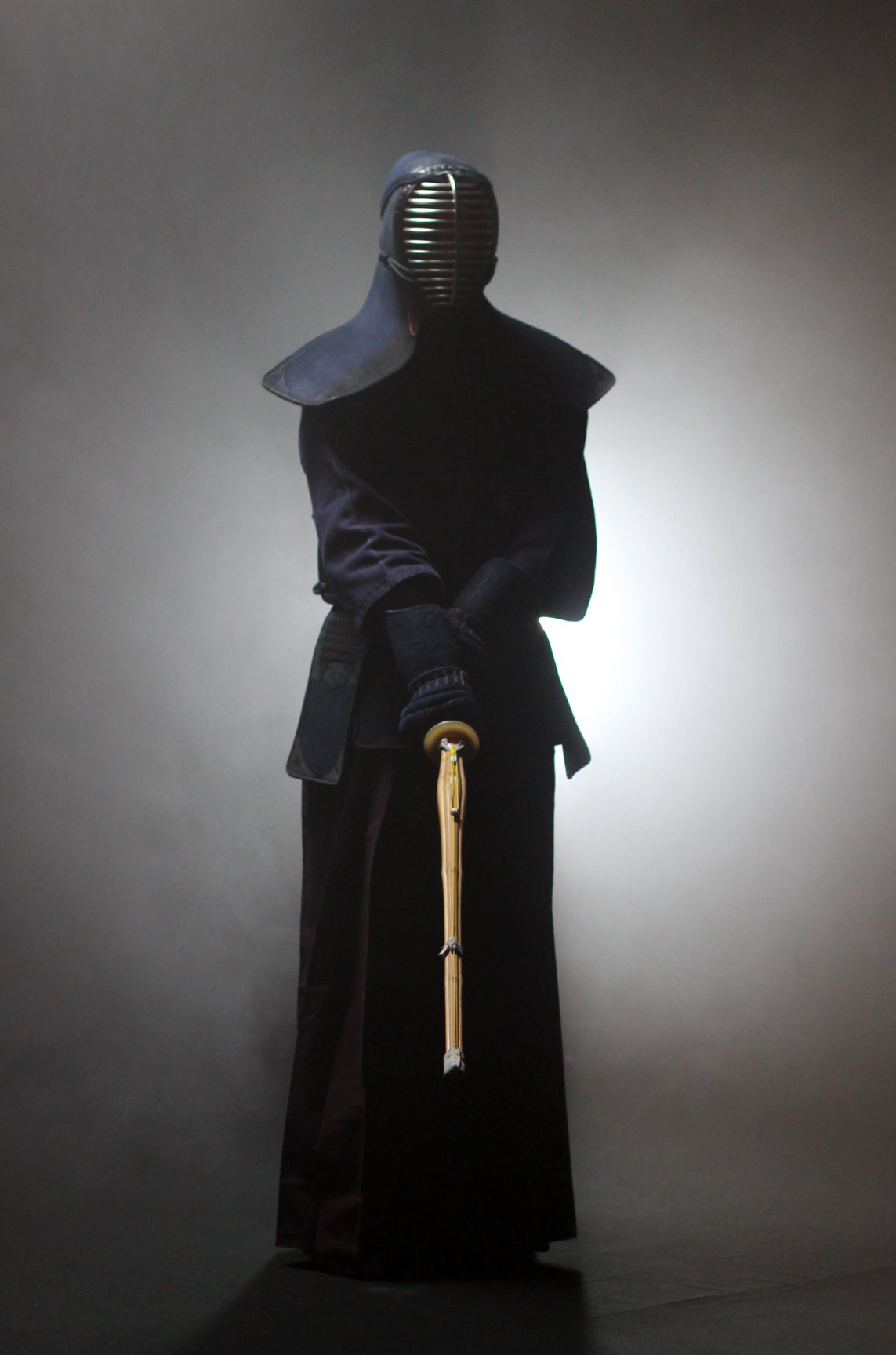What is Kendo?
Kendo (剣道, "way of the sword") is a modern Japanese martial art originating from the experiences of the samurai who trained to use Japanese swords (nihonto) in combat. Kendo practitioners (kendoka) use bamboo swords (shinai) and armour (bogu) for fencing, and wooden swords (bokuto) for practicing traditional sword forms (kata) in pairs.
First impressions of Kendo are of a noisy, aggressive and violent full-contact martial art. Kendo is certainly dynamic, but a little study will soon reveal a high level of skill and concentration, together with a grace and physical agility that any choreographer would appreciate. Kendo may be safely practised by men, women and children of all ages, and the type and level of practice may of course be adjusted to suit each pupil.
Beginners typically start learning kendo by practicing the basic movements and techniques with a shinai or bokuto. Once students have got the hang of the basics, they will be encouraged to try wearing bogu so that they can practice more complex techniques and learn to fence other students in jigeiko (free practice between two kendoka wearing bogu).
When a kendoka has enough experience, they may take grading examinations to see if their skills have reached the level required for the next grade. The requirements for each grade are set by national/international kendo associations, depending on the grade. Kendoka may also choose to take part in tournaments (taikai) to test their skills against other kendoka from outside their own club (dojo) in a competitive environment.
The most senior Kendo teachers in the BKA are 7th Dan, with several 6th and 5th Dans who train in various parts of the country.
The Concept and Purpose of Kendo

History
In the middle of the Heian period (794–1185), swords with distinctive features such as a curvature (sori) and raised ridges along the length of the blade (shinogi) were produced by Japanese smiths and became an integral part of the samurai’s weaponry. Swords came to symbolize the samurai’s spirit, and are often referred to as embodying the “mind” of the samurai. Not only seen as weapons, sword production flourished as an expression art representing strength and beauty.
From the Warring States period (1467–1603) through to the early stages of the Edo period (1603–1868), many schools of swordsmanship (kenjutsu) were established, and in the 18th century protective training armor resembling that used in kendo today was developed. Through this a new safe, full-contact methodology for kenjutsu training using bamboo swords (shinai) took root. Consequently, a competitive style of kenjutsu competition gained popularity and spread throughout the country around the end of the Edo period. Early in the 20th century, this type of training in swordsmanship, which was referred to as “gekiken” or “kenjutsu” was renamed “kendo” which literally means the “Way of the sword”. Kendo became a representative discipline of modern Japanese “budo” (martial arts/ways), of which the underpinning ideals of self-improvement are grounded in the spirit of the samurai. The method of kendo that we study and enjoy now is a product of centuries of development in Japan.
After the Second World War, kendo was prohibited for a while under the Occupation of the Allied Forces. In 1952, however, when the All Japan Kendo Federation was established, kendo was formally resurrected. Kendo presently plays an important role in school education in Japan, and is also popular with people of all ages and walks of life. Several million kendo practitioners enjoy participating in regular sessions of keiko (kendo training).
Furthermore, kendo is gaining interest all around the world. The International Kendo Federation (FIK) was established in 1970 and the first triennial World Kendo Championships (WKC) was held in the Nippon Budokan in the same year.
FAQ
Equipment Suppliers
Armour quality can vary a lot, due to the way it is constructed and where it comes from. Basic differences in armour are:
- Modern synthetic or traditional materials
- Larger stitch width for better comfort or smaller stitch width for better durability
- Decoration and customisations